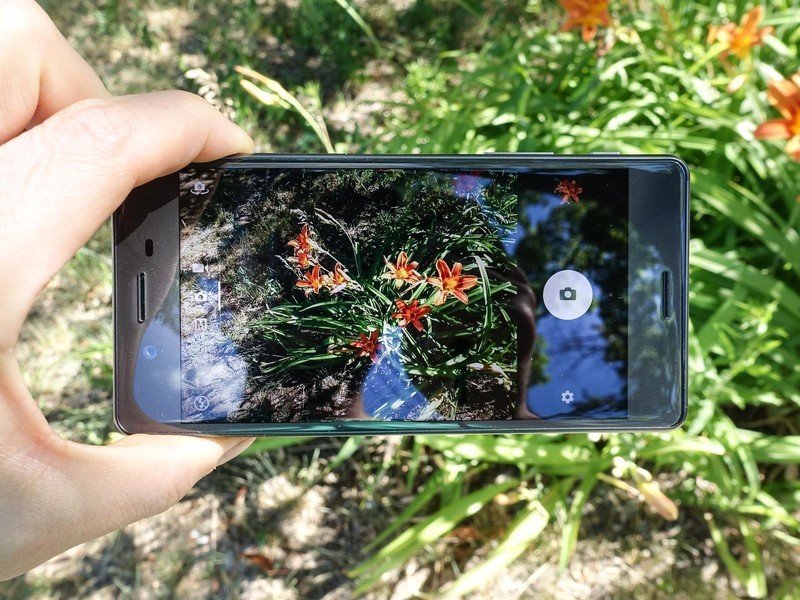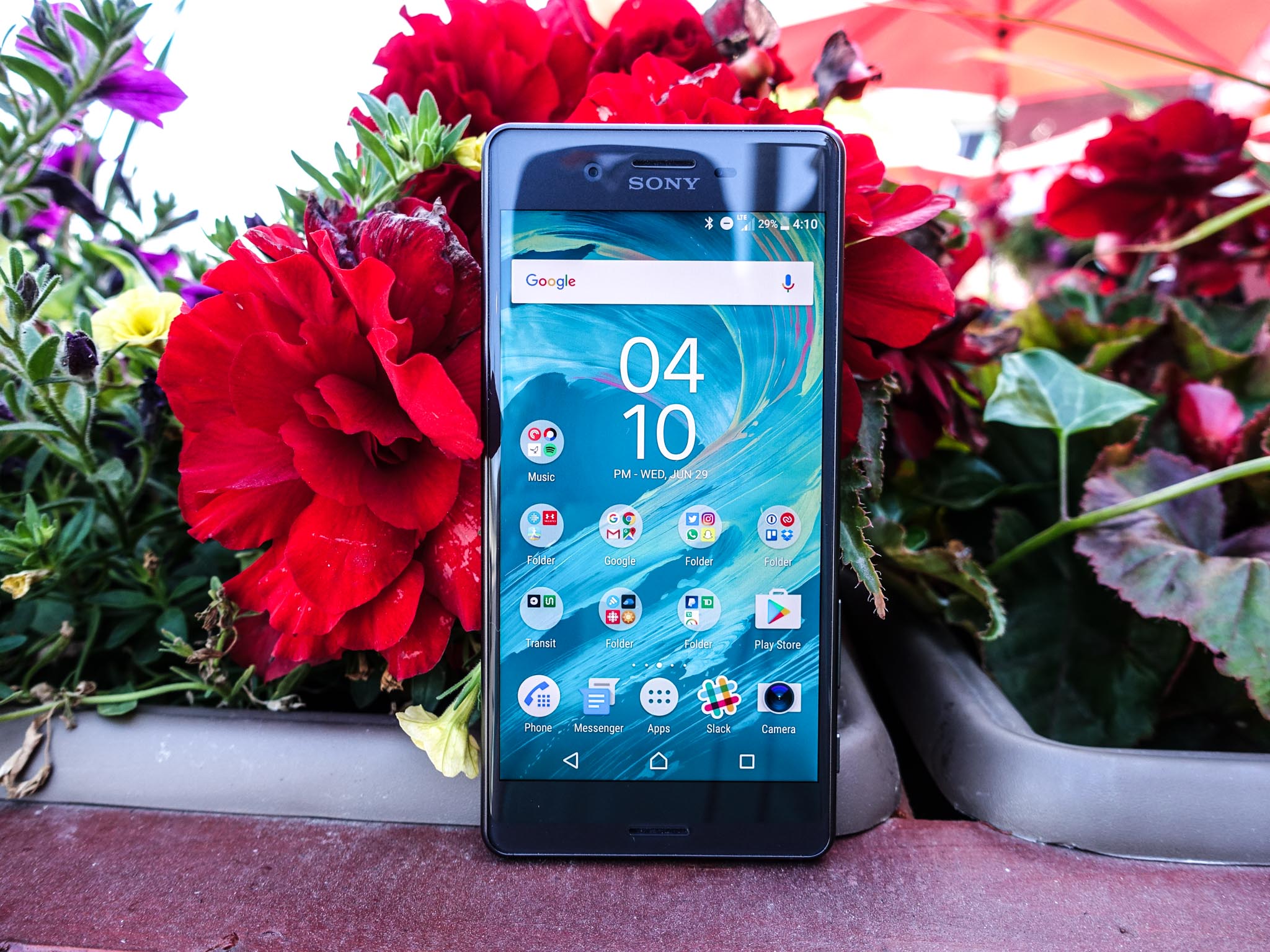The quick take
The Sony Xperia X Performance is a good phone, but it not only fails to justify its $150 premium over its cheaper counterpart, it also falls down as a flagship, too. Too few improvements over the Z5 series, and some frustrating screen responsiveness issues, have us asking how, after so long, Sony still can't get it right.
The Good
- Great performance in apps and games
- Nice daylight photo capabilities
- Excellent stereo sound output
- Waterproof metal chassis is one hand-friendly
The Bad
- Stupefying screen responsiveness issues
- Slow camera startup and occasional shutter stutter
- Too similar to the Z5
- Can't justify its $150 price increase over Xperia X
Fighting to justify a price
Sony Xperia X Performance Full review
Sony's had an interesting few years in the mobile space. Since 2013, the company released a new Z-series product every eight months or so, iterating on what has become a relatively safe, austere design ethic. When the series arrived at its fifth version (the Japan-only Z4 notwithstanding) in 2015, it became apparent there wasn't much innovation left to extract from, as the company claimed, "the best of Sony."
That's why, when the Xperia X and its Performance counterpart were unveiled at Mobile World Congress earlier this year, I was at once let down and cautiously optimistic about Sony's commitment to improvement. Let down because at first glance the new series resembled its predecessors in too many ways; optimistic because Sony claimed that it was breaking ties with its past.
The reality is somewhere in the middle: while the Xperia X, and its X Performance counterpart, are in some ways marked improvements in Sony's mobile narrative, they are also regressions in a couple important ways. And when the more expensive of the two arrives at a price point equivalent to some of the best products on the market, its existence becomes harder to justify.
About this review
I (Daniel Bader) am writing this review after using the Canadian model of the Sony Xperia X Performance (F8131) for two weeks in the Greater Toronto area. I used the phone primarily on Bell's LTE network, but popped in my personal Rogers SIM card for a time.
The device ran Android 6.0.1 on Build number 35.0.A.1.227 for the entirety, with a (disappointing) April 1, 2016 security patch.
- 5.0-inch Full HD
- IPS LCD Display
- 1920x1080 resolution (441ppi)
- 23MP, ƒ/2.0 lens
- 13MP front camera
- 2700 mAh capacity
- Quick Charge 2.0
- Qualcomm Snapdragon 820 processor
- Dual-core 2.2GHz, Dual-core 1.6Ghz
- 3GB RAM
- 32GB internal storage
- microSD slot

Same difference
Sony Xperia X Performance Hardware
Last year, when Sony replaced its so-called OmniBalance power button with a flat, sunken key that doubled as a fingerprint sensor, there was a palpable sense of rightness in the decision. That the Xperia X Performance maintains that legacy is no surprise, but Sony's decision to keep all but a few elements of the Z series in tact is — and disappointing.
(A quick note: the U.S. version of the Sony Xperia X Performance doesn't include a fingerprint sensor in the power button, for reasons both confusing to us and irrelevant to users who miss out on one of the phone's best features.)
Compact though it is — the metallic chassis more than resembles the Xperia Z5 Compact — the 5-inch display approaches the edges on the vertical side but leaves plenty of room on the horizontal. Thankfully, Sony decided to use the area on top of the 2700 mAh to expand the cavities in both front-facing speakers, resulting in some of the best external sound I've heard on a smartphone outside of HTC's products.
The right side reinforces Sony's "if it ain't broke" mentality, recalling every Z-series product with the centered power button above an elongated volume rocker and dual-step camera shutter. I suppose I should be grateful for the camera shutter, but as you'll see later, its efficacy is marred by software that cares little for cooperating.
While the phone's IPS panel is great, the phone's touch sensor is not. In fact, it's the X Performance's biggest fault.
And while the phone's frame is metal, as is the back, whose hairline brushed texture differentiates it from the staid aluminum of the Xperia X, the sides are a smooth plastic, which elegantly meet the curved glass of the 1080p screen.
I concur with Mr. Dobie in saying that I don't begrudge Sony sticking to a 1920x1080 pixel panel for the X series; it is not only one of the best I've seen on a smartphone, but at 441ppi it is sufficiently sharp to meet even the most demanding of critics. Moreover, the screen gets bright — really bright — which is fantastic for outdoor visibility.

But here's the thing: while the IPS LCD panel is great, the phone's touch sensor is not. In fact, it's the X Performance's biggest fault. When I began using the phone, I tapped out a few messages to some friends and discovered the screen couldn't keep up. I changed keyboards, from the default SwiftKey to Google Keyboard, with identical results. I descended pages in Chrome, realizing the phone didn't always register my light taps to stop scrolling. I did the same for Twitter, with identical results.
In app after app, I discovered the X Performance failed to register light taps. I went back to the Xperia X and noticed a similar trend. I asked Andrew Martonik, who received the X Performance a week after me, who corroborated my findings.
Now, touch sensitivity is a, well, sensitive topic. Some people mash their keyboards; others very deliberately tap to stop a scrolling web page. Those people should be fine with the X Performance, but this is an issue I haven't experienced so overtly since the poor touch performance on the Nexus One back in 2010. For the way I use my phone, the X Performance quickly became an exercise in frustration. While I found more success switching to gliding, that I couldn't confidently type consistently marred the experience of using the Xperia X Performance. What's unclear is whether the X Performance could avert this disaster on a larger scale with a software update, or if the touch sensor is inherently flawed. (Sony has been mute on the topic so far.)
It's also possible that I am being overly, well, sensitive to this whole thing and that its screen sensitivity will go unnoticed by Sony's customers — but I'm willing to bet it won't.
Around back, the X Performance's camera neither protrudes nor draws attention to itself, which is a nice change of pace from the rest of the big players in the industry, but the single LED flash is disappointingly perfunctory. More on the camera below.
The specs contained inside is where the X Performance is supposed to differentiate itself. With a quad-core Snapdragon 820 — currently Qualcomm's fastest chip, and the same one found in the Samsung Galaxy S7, LG G5, and HTC 10 — the Performance has ample room to breathe. In fact, as Alex noted in his review of the Xperia X, even the much slower Snapdragon 650 is sufficiently capable of powering Android 6.0 with a 1080p display.

So why covet the more powerful chip? While apps and games certainly load faster and perform better, much of the difference can be seen in the speed at which the camera app loads and takes pictures. Sony still has a long way to go to compete with Samsung and HTC when it comes to the camera loading times — the speed at which you go from black screen to shutter — but the X Performance is notably faster than the X in this regard. The Snapdragon 820 also has a best-in-class image signal processor that improves overall photo quality by reducing noise, especially in low light, and anticipating hand shake to offset motion blur. Unfortunately, without optical image stabilization, Sony's excellent 23MP sensor is still subject to the whims of physics, but the X Performance takes great photos at least some of the time.

So subtle
Xperia X Performance Software
It's clear that, like many other OEMs, Sony is moving away from software differentiation in favor of a simplified launcher and Material Design flourishes in its apps.
But Sony has not taken hints from the likes of HTC in reducing the number of apps it pre-installs on its devices. To wit, the Xperia X Performance arrives replete with (admittedly well-designed) takes on the gallery, video player, music player, email client, news aggregator, weather app, fitness app, sketching app, movie maker, and Shazam clone. (A few like to pop up promotional notifications as well.) In all, aside from the essentials like the phone and contacts app, there were 14 Sony-built apps preloaded on the X Performance, and a couple others, like Amazon Shopping and AVG Protection antivirus, that were tacked on for additional revenue.
Defying appearances of a lightweight experience, Sony's version of Android occupies nearly 12GB of the phone's 32GB of internal storage
I can't really begrudge Sony for wanting to outfit its customers with the best experiences, but there is just too much in the way of superfluous and unnecessary software here for my liking. Apps like Movie Creator and Sketch are inherently not well suited for a 5-inch canvas, and should have stayed on the Play Store as opt-in experiences.
Defying appearances of a lightweight experience, Sony's version of Android occupies nearly 12GB of the phone's 32GB of internal storage, a gross misuse of important user resources. Some of these assets can be found in the form of themes, four of which are included on the phone, with many more available on Sony's haphazardly stocked and of-dubious-quality Xperia Theme store.
The company's launcher has stolen one of the better features from the iPhone in the ability to swipe down on an unused portion of the homescreen to quickly search for and open apps. While Sony does use this as an opportunity to suggest likely-sponsored apps, I found it an effortless and intuitive way to quickly bypass the folder/app drawer dichotomy. Elsewhere, the multitasking menu, notification shade, and quick settings are all reminiscent of stock Android Marshmallow, which I dare say is a good call.

As it tends to, Sony's bundled a confusing array of audio options that are thankfully not necessary to enjoy the phone's excellent aural output, but present for those who want to tweak. A feature taken from the company's new Walkman line, DSEE HX, upconverts music to "near Hi-Res Audio quality" by interpreting in real time and filling in the frequency gaps in most modern compressed audio streams. Another, ClearAudio+, automatically equalizes and normalizes music played from either the headphone jack or front-facing speakers. I found that neither setting dramatically improved the quality of a typical 320kbps Spotify stream.
Similarly, Sony's outfitted the X Performance with a vast array of display settings, including its mainstay X-Reality for mobile algorithms that improve the quality of photos and videos when viewed or played through its first-party apps. These are, as above, subtle changes that most people either won't notice or take the time to appreciate. They'll just hear great audio and view vivid images.

Here's what I think: If Sony really wanted to use the X line to split from the deleterious abundance of options in its Z series, it should have merely incorporated these algorithms into the core operating system and removed the user from the equation altogether. As it stands, the X line is shaping up to be just as bloated as its forebears, which will (in addition to its insane price) harm its mass appeal. Samsung is a good example of a company that learned its lesson between generations by explicitly simplifying its software, emphasizing only those features it truly believes users will want to both download, and use.

Sharp, at times
Sony Xperia X Performance Cameras
If you want the best camera on an Android phone, especially one in the $500+ range, look elsewhere. While the quality is marginably improved over the regular Xperia X, thanks to differences in the image signal processing between the Snapdragon 650 and 820, you're getting pretty close to the same experience.
As with much of the X Performance, the camera experience is nearly great but is marred by a couple of glaring issues.
As in years past, the 23MP Exmor RS sensor is of high quality, but fails to impress in low light situations. In sunlight, though, I was able to take some pretty great photos, with sharp, fast focus and ample detail. In low light, however, the lack of optical image stabilization forces Sony's camera app to raise the light sensitivity (ISO) to undesirable levels in order to keep shutter speed apace with its subjects.














Let's put this into real-world terms: I attended a wedding this past weekend, and used the Xperia X Performance as my primary camera. Since it was at a botanical garden, I was able to snap some lovely nature photos, and some great portraits, all of which came out superbly thanks to Sony's relatively intelligent Superior Auto mode. But once we went indoors and the lights dimmed, the X Performance balked at any attempt I made to capture even the slowest-moving of humans, maxing its shutter at a woeful 1/8 despite ratcheting the ISO to above 2000.
While optical image stabilization doesn't solve for fast-moving subjects, it does account for hand shake, and usually leads to better photos in general. Sony's stubborn refusal to outfit even its flagship products with such a module borders on idiocy at this point, as practically every other OEM, from Samsung to HTC to LG, OnePlus and Huawei, have figured this out (the Nexus 6P being the one major exception).

As with much of the X Performance, the camera experience is nearly great, but, photo quality aside, is marred by a couple of glaring issues. The camera app doesn't load quickly enough, and the shutter often stumbles on its first capture, which is usually of the most critical subject. And mirroring its predecessors, the app's manual mode is woefully understocked, with no ability to set shutter speed or focus. For a phone that wants to sell itself on the efficacy of its camera experience, it stumbles far too often.
One big change from the Z5 series is the 13MP front-facing camera, which is indeed one of the better sensors I've tried. It's also paired with a fairly wide f2.0 lens that meets all of the important criteria for social engagements: quick focus; room for more than two people without stretching; and smile shutter.

Good, not great
Xperia X Performance Battery life
With a slightly larger 2700 mAh cell than its X counterpart, the X Performance offers merely average battery life. After using the phone as my daily driver for two weeks, I would end some days with upwards of 30% left in the tank, while on others I would contend with having to charge by 3 p.m. The Snapdragon 820 seems to be more efficient than the 810 found in the Z5, but I also think that phone's 2900 mAh was probably the right size, and I would have taken a slightly thicker chassis to benefit from an extra 10% of battery capacity.
Thankfully, the phone supports Qualcomm's Quick Charge 2.0 standard, which promises to charge it from dead to full in under 90 minutes. That said, some sort of fast charging support is table stakes for phones half this price. You'd also think that including a quick charger in the box would be table stakes ... but the Canadian model doesn't have one (the U.S. model does, though.)

The Bottom Line
Should you buy the Sony Xperia X Performance? Probably not
Let's take a look at what we have. A phone with at least one critical flaw that could possibly be solved with a software update. A phone that, were it $200 cheaper, would still have trouble standing out amidst a sea of affordable and compelling Android devices. A phone that misses its opportunity to really capitalize on Sony's glowing reputation for making the industry's best phone camera sensors. A phone that insists on offering the same number of vexing and acronym-heavy audiovisual features as its predecessors.
When I look at the X Performance, I don't see a series that breaks away from its Z predecessor. I see evidence of a company that knows how to make 80% of a great smartphone and no idea where the other 20% is hiding.
Where to buy the Sony Xperia X Performance
You can buy the Sony Xperia X Performance from several retailers online in the U.S., as well as in Canada.
Daniel Bader was a former Android Central Editor-in-Chief and Executive Editor for iMore and Windows Central.


